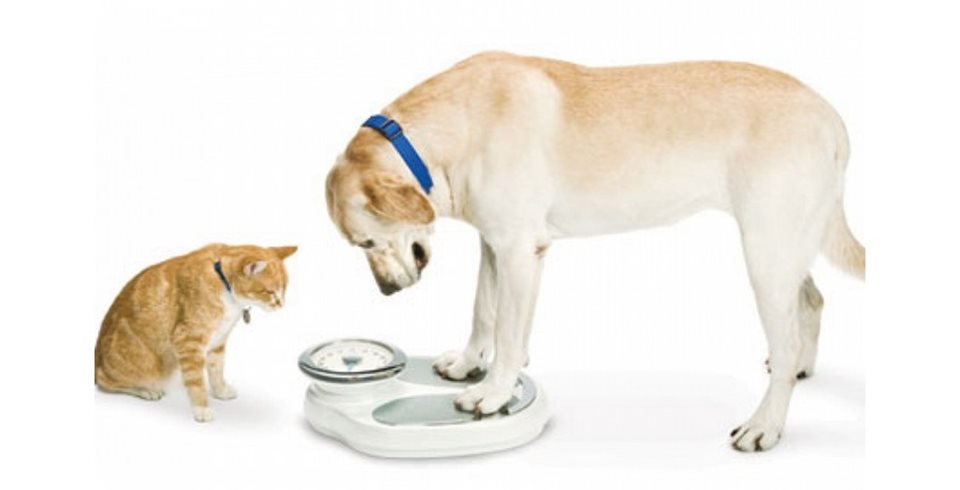Increased weight can cause significant health problems or exacerbate existing problems and certainly reduces an animal's life expectancy and creates musculoskeletal problems. Important health problems directly related to obesity are:
Diabetes
Heart diseases
Shortness of breath
Increased pressure
Cancer
An animal is considered overweight when its weight is 15% above the ideal and obese when its weight exceeds 30% of its ideal weight. In addition to checking the animal's weight, some simple checks that the owner can make are:
If the animal's ribs can be seen or felt, that they are not covered with fat.
If it is visible or if we can clearly feel the waist of the animal, when viewed from above.
The pet's belly should not hang when viewed from the side.
An obese animal should go to the vet for a clinical examination, hematological and urological examination. It is important to determine if there is any hormonal, metabolic or other physical dysfunction. If the animal is normal, in addition to the excessive accumulation of fat, a diet plan can be followed so that the animal gradually loses the excess weight. But how does an animal become obese?
Any mammal, when it takes in more energy than it expends, will increase its weight. It is so simple! In the wild, foraging is never a sure thing for any dog or cat, which is why foraging was accompanied by intense physical activity and was always an energy-consuming process. On the contrary, for a domestic animal the superabundance of food and its consumption with zero effort by the animal has become a way of life.
Inappropriate food such as leftovers from the table, low quality food, poor eating habits and lack of exercise are factors that cause obesity. Especially the constant availability of food, having the animal's plate constantly full is one of the most important reasons for weight gain, as it is something completely unnatural for a predator, which has instincts to constantly search for food. Also, low quality foods have relatively low protein and very low percentages of meat and correspondingly high percentages of grains and corn, contrary to the needs of the dog or cat. Human food is unsuitable for animals and even harmful in many cases. Finally, providing treats without being counted in the animal's daily amount of food contributes to an increase in body weight.
Other factors that favor obesity may be:
Race – some races have an increased tendency towards obesity.
Gender – females have an increased tendency to develop obesity compared to male animals.
Age – the tendency to obesity increases with age.
Spaying – spayed animals have an increased tendency to obesity.
Owner – obese owners are more likely to have obese animals, perhaps due to reduced exercise or in some cases less willingness to notice the problem.
Also, a combination of physical, emotional, environmental endocrinological or even neurological causes can contribute to obesity. Musculoskeletal and other motor problems that affect the animal's ability to move contribute to an increase in body weight and excessive fat accumulation.
Finally, behavioral reasons of the animal and psychological reasons of the owner are often a reason for providing an extra amount of food. A meowing cat or a barking dog trying to get our attention is a common way the animal interacts with us. This does not mean that the animal is hungry. But providing food when the animal exhibits this behavior automatically means to the animal that the behavior is rewarded, which leads to its repetition. Accordingly, when an animal shows interest in something that the owner is eating, this does not mean that it is hungry, and providing food in such a case simply worsens this behavior. The result is that the animal continues the disruptive behavior and eats excessive amounts of food overall.
However, obesity can be prevented!
Basic steps an owner should take to reduce or avoid obesity are:
Proper nutrition by providing good quality feed, high in meat and protein.
Controlling its quantity and dividing it into 2 to 4 meals a day, instead of continuously providing food to the animal.
Limitation of delicacies and the inclusion of their energy content in the daily food intake.
Regular control of the animal's weight and monitoring of its health by a veterinarian.
Finally, the physical exercise of the animal is the key to reducing and maintaining the ideal weight and to the best quality of life of your beloved pet.
Avoiding obesity in dogs and cats means a happier animal, better health, fewer problems and ultimately more and better years with our beloved animal!


